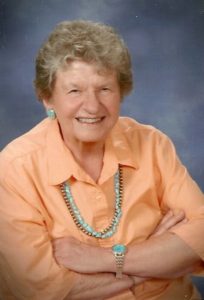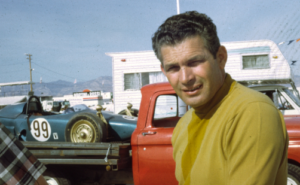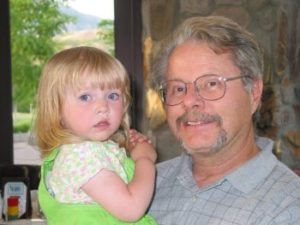MaryLou Robson – Chuck Tatum – David Vodden
2016
MARY LOU ROBSON
Mary Lou was born and raised in Denver and graduated from the University of Colorado with a BS in Nursing. She moved to California in 1961 and worked on the Trauma Team at San Francisco General Hospital. She switched to office nursing because she started working races and needed weekends off.
She was first introduced to racing on a date at Cotati Race track with her late husband Rocky Robson who was crewing for a friend. After they were married, he decided he wanted to be a flagger at the races. She got bored and knew she need to find something to do at the track, so she started

working turns as a Communicator in 1962–at which time she joined USARM (United States Auto Race Marshals). A year later she was asked to become Chief of Communications. So she and Rocky decided that if she held that title, she needed to join SCCA–which she did in 1964.
Along with racing, she and Rocky were very active in the SF Region’s Concours de’Elegance program. Rocky was the Chief Field Marshal and she was a Field Marshal, also serving as the Chief Field Marshal at Hillsborough, Sacramento, Livermore, and Palo Alto. In 2005, she renewed her concours work as announcer at Palo Alto and Marin.
Besides being Chief of Communications, she has been Chief Announcer, worked with the ladies in Race Central (now known as Race Administration because of multiple duties), Membership Chair, founded the Chapel services at club events as Chapel Coordinator and in 2004, she joined the Stewards team. She has been on the SFR HOF committee since its inception. She has also been on the SCCA National HOF Nomination Committee for three years.
After Rocky died, Mary Lou renewed an acquaintance with a friend from the Concours days–Ernie Mendicki, who also raced at the Monterey Historics. They were eventually married. She went through Drivers School in 1993 at Thunderhill in Mike Benson’s Spec Racer Renault. There was a mouse which didn’t live to tell the tale of her hitting his hay bale that weekend, hence the “Verminator” license plate on her race car. She eventually bought a Crossley Hot Shot and raced it at the Monterey Historics for three years until Ernie passed away.
Things have changed over the years at our various race tracks. At Sears Point (called Sonoma Raceway these days), Race Control started in a school bus parked on S/F straight, then moved to the pagoda above where Emergency was stationed, next to the drag tower, and finally above the main grandstands. At Laguna Seca, Race Control was a table on driver’s right, about half way up the S/F straight. Then to the half bridge, where the starters worked, on the end and were again out in the open air, this time above the ground. Next it was to the upstairs of what was then called the Newman Building (later Skip Barber school), where you couldn’t see anything. Of course it now resides next to the Timing & Scoring building on the fourth floor of the control tower.
Mary Lou, has received a number of awards over the years:
- Premier Award of Merit in 1975
- SCCA Regional Executive Award in 1976
- RDC Worker Performance Award 1991 (to the Announce crew when she was Chief)
- Thunderhill Worker of the Year in 1998
- SCCA Worker of the Weekend Oct. 6-8, 2000
- SCCA Board Award 2002
- SCCA Board Award 2003
CHARLES W. “CHUCK” TATUM
(1926-2014)
While he is best known for building the Crusader Formula Vee’s he began his car building career shortly after returning from WW II where he served

as a Marine in the battle of Iwo Jima. While in his early 20’s, Chuck built several Jalopy stock cars to compete in oval track racing based out of his Stockton, CA home. This lead to road racing in 1953 with his own car.
Chuck was also quite active in helping to promote road racing in Stockton which began at the Stockton Airport in 1952. This was a sorely needed addition to the SFR schedule which included only three other road races that year. Working behind the scenes, Chuck actively worked to bring the races to his hometown. There were 103 entries for the first race and 12,000 spectators in attendance which not only made this a successful event but also ensured it would be on the SFR race calendar for 1953. In fact the Stockton Road Races remained a part of the SFR schedule until the last race in 1966. At that time, Stockton had been the longest running event in the club’s history.
The Formula Vee (FV) idea was simple enough: build a racecar to a set of specific rules from a readily available supply of parts that anyone interested in going racing could afford. This was not a new idea, as others had tried to create inexpensive cars, but in 1959, Herbert Brundage (SCCA HOF inductee in 2016), a southeastern distributor for Volkswagen, thought he could make it work. Brundage commissioned Enrico Nardi to construct a single seat, mid-engine Formula Junior car built around a standard Volkswagen engine, transmission, brakes, wheels and suspension. This first car handled poorly and was set aside.
A chance encounter between Brundage and retired Col. George M. Smith brought new life to the project which resulted in a car they named Formcar. Smith began to receive orders for his car, and set about promoting the class to SCCA. In 1963 he received permission to run FV’s as an unofficial class with full recognition beginning in 1964.
Here in the West, local racer and car builder Chuck Tatum happened upon a Formcar at the Candlestick Park races in September 1963. One thing led to another and five weeks later, Tatum became one of the earliest U.S. manufactures of Formula Vee’s when his newly named “Crusader” was completed. At the June 1964 Stockton races, Tatum and fellow Crusader drivers Jerry Demele, Bob Doctor, John Grove, Ken Livesey, Tony Simonaro and seven were part of the first SFR grid of Formula Vees. Little did he know how popular this class of cars would become. Tatum would eventually build in excess of 150 cars in succeeding years and outlast most of the other original builders.
Chuck wrote the acclaimed novel, “Red Blood, Black Sand”. He helped produce a PBS documentary based on his book which won him an Emmy Award. His novel was credited as one of the three books in HBO’s mini-series, “The Pacific”. During his service in WW II, he was awarded the Bronze Star and Purple Heart. He was a past president of the Stockton Marine Corps Club.
A unique soul, he was gregarious and quick witted, with a fantastic memory and a great story teller.
DAVID BRUCE VODDEN
David was born in Billings, Montana, one of seven siblings. Before leaving for Orange County, California, he acquired a taste for auto racing courtesy of his older brother and mentor, Lee.
David founded the California Jalopy Association on KTLA-TV running on

Sunday afternoons. While growing up in the dirt-track circle world of racing, David earned BA and MBA degrees in business at Cal State Fullerton. At this early juncture his resume did not include driving. After college he purchased a sprint car and then later a three quarter midget. David drove at Ascot, South Gate, Ventura, Orange County, Saugus, Las Vegas and lesser known spots in between.
In 1980 he became the General Manager of Baylands Raceway Park in Fremont. He got behind the wheel again. Sprint cars would dominate his racing agenda until retirement in 2003. When Baylands closed, a friend of a friend, Geoff Provo, suggested that David be considered as a candidate to run the San Francisco Region of the Sports Car Club of America’s (SFR/SCCA) new road track. This was 1987, almost thirty years ago.
David was a consultant to our track effort when our beloved Region Manager, Don Wixcel became ill. David was asked to take over as Region Manager while Don recovered. Once in the seat at the clubs office on Pacific Avenue in San Francisco, he was on his way to not only make our track a reality but to help the clubs bottom line as well. He moved our office to Livermore. He brought a successful merchandising program to the club that not only added a bottom line but spread our logo and our message wherever the shirts, hats and jackets were worn.
Using his business education and unusual resume in the sport, David worked with a bevy of great people to build Thunderhill Raceway Park from a dream to what it is today, a $14M multi-dimensional motorsports business that enjoys success at the bottom line and a fantastic reputation in the motorsports industry.
In 1990 David climbed back into the driver’s seat and began racing in SCCA. He has raced in ITD, ITC, ITB, ITA, SSA, PT, RX7, SM, STL and anything else he could talk people into letting him drive. He has won several Regional Championships as well as Pacific Coast Road Racing (PCRRC) titles.
Today, David is the CEO of Thunderhill Raceway Park and is most proud that Thunderhill has no debt and is positioned today to survive well into the future for members of the SFR/SCCA. David is also blessed to have three successful children and five awesome grandchildren. He is further blessed to be married to Terry Taylor as his partner in the mission of life.
